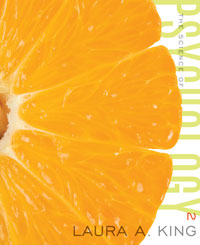1 A) the cat food B) the sound of the electric can opener C) the cat coming to the kitchen D) Tamara 2 A) the car accident B) Robert's fear and anxiety C) music by Mozart D) driving a car 3 A) acquisition. B) counterconditioning. C) spontaneous recovery. D) generalization. 4 A) the dog B) the loud noise C) the crying D) the barking 5 A) the amount of time that passes between the conditioned stimulus and the unconditioned stimulus. B) the frequency with which the conditioned stimulus and the unconditioned stimulus occur together. C) the pairing of the conditioned response with the unconditioned response. D) the weakening of the conditioned response when the unconditioned stimulus is absent. 6 A) extinction B) spontaneous recovery C) discrimination D) counterconditioning 7 A) discrimination B) extinction C) counterconditioning D) secondary reinforcement 8 A) classical conditioning B) observational learning C) operant conditioning D) negative reinforcement 9 A) positive reinforcement. B) negative reinforcement. C) positive punishment. D) negative punishment. 10 A) a fixed-ratio schedule B) a variable-ratio schedule C) a fixed-interval schedule D) a variable-interval schedule 11 A) serotonin B) dopamine C) epinephrine D) acetylcholine 12 A) classical conditioning. B) operant learning. C) observational learning. D) associative learning. 13 A) insight learning. B) latent learning. C) observational learning. D) operant conditioning. 14 A) insight learning. B) purposive behaviors. C) learned helplessness. D) negative punishment. 15 A) classical conditioning. B) operant conditioning. C) observational learning. D) preparedness. 16 A) classical conditioning B) operant learning C) observational learning D) negative reinforcement 17 A) positive reinforcement. B) negative reinforcement. C) positive punishment. D) negative punishment. 18 A) Classical conditioning focuses on involuntary responses, whereas operant conditioning focuses on voluntary behaviors. B) Classical conditioning is involved with negative outcomes, whereas operant conditioning is involved with positive outcomes. C) Extinction occurs in classical conditioning, but not in operant conditioning. D) Shaping occurs in classical conditioning, but not in operant conditioning. 19 A) hippocampus B) nucleus accumbens C) occipital lobe D) thalamus 20 A) attention B) retention C) generalization D) reinforcement





